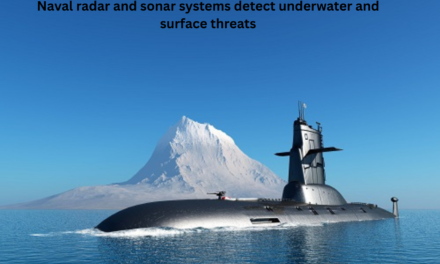Sustainability is becoming a central focus in the aerospace industry, with manufacturers adopting innovative technologies and processes to create eco-friendly aircraft. These efforts aim to reduce carbon emissions, minimize waste, and improve energy efficiency while meeting regulatory and market demands for environmentally responsible solutions. Here are the latest trends in sustainable and eco-friendly aircraft manufacturing:
1. Use of Sustainable Materials
- Lightweight Composites:
- Carbon-fiber-reinforced polymers (CFRPs) and other lightweight materials reduce aircraft weight, improving fuel efficiency and lowering emissions.
- Bio-based composites made from renewable sources like flax and hemp are gaining traction.
- Recycled Materials:
- Aircraft components are increasingly being manufactured from recycled metals and plastics to reduce waste and resource consumption.
- Example: Boeing’s use of recycled carbon fiber in some structural components.
- Green Adhesives and Coatings:
- Adoption of non-toxic, water-based paints and coatings to reduce volatile organic compound (VOC) emissions during manufacturing.
2. Electrification and Hybrid Propulsion Systems
- Electric Aircraft:
- Manufacturers are developing fully electric aircraft for short-haul flights and urban air mobility (UAM), such as eVTOL (electric vertical takeoff and landing) aircraft.
- Example: Eviation’s Alice is a fully electric commuter plane designed for zero-emission flights.
- Hybrid Propulsion:
- Hybrid-electric systems combine traditional jet engines with electric motors to reduce fuel consumption and emissions.
- Example: Airbus’ E-Fan X project explored hybrid propulsion for regional aircraft.
3. Sustainable Aviation Fuels (SAFs)
- SAF Adoption:
- Aircraft are being designed to operate on a blend of traditional jet fuel and SAFs, which can reduce lifecycle emissions by up to 80%.
- SAFs are produced from waste oils, agricultural residues, and other renewable sources.
- Certification Compatibility:
- Aircraft engines are being certified for 100% SAF compatibility, paving the way for carbon-neutral operations.
4. Advanced Manufacturing Technologies
- Additive Manufacturing (3D Printing):
- Producing lightweight, complex components with minimal material waste.
- Reduces transportation emissions by enabling localized production of spare parts.
- Digital Twin Technology:
- Optimizes production processes, minimizes waste, and reduces energy consumption in manufacturing.
- Automation and Robotics:
- Automated systems improve precision and reduce scrap material during manufacturing.
5. Energy-Efficient Manufacturing Processes
- Renewable Energy:
- Aircraft manufacturing facilities are increasingly powered by renewable energy sources like solar and wind.
- Example: Airbus operates some of its production sites with 100% renewable electricity.
- Sustainable Water Use:
- Implementing closed-loop water systems and water recycling technologies in production facilities.
- Low-Emission Processes:
- Use of green technologies like friction stir welding (FSW) that consume less energy compared to traditional methods.
6. Circular Economy Initiatives
- End-of-Life Recycling:
- Aircraft manufacturers are designing components that are easier to recycle at the end of their lifecycle.
- Example: Airbus’ PAMELA (Process for Advanced Management of End-of-Life Aircraft) program recycles up to 90% of an aircraft’s weight.
- Modular Design:
- Modular systems allow for easier upgrades and reuse of components, extending the aircraft’s lifecycle and reducing waste.
7. Improved Aerodynamic Designs
- Wing Innovations:
- High-efficiency wing designs, such as Airbus’ “Wing of Tomorrow” project, improve lift-to-drag ratios, reducing fuel consumption.
- Blended Wing Bodies:
- Aircraft with blended wing-body designs, like NASA’s X-59 and Airbus’ Maveric concept, reduce drag and increase fuel efficiency.
- Laminar Flow Technologies:
- Surface treatments and designs that maintain smooth airflow over wings and fuselage to reduce drag.
8. Hydrogen-Powered Aircraft
- Hydrogen Propulsion Systems:
- Development of hydrogen fuel cell and combustion systems for zero-emission flights.
- Example: Airbus’ ZEROe concept aircraft is exploring hydrogen as a primary fuel source.
- Cryogenic Tanks:
- New storage systems are being developed to safely store liquid hydrogen at ultra-low temperatures.
9. Noise Reduction Technologies
- Quiet Engines:
- Engine designs, such as high-bypass turbofans, reduce noise pollution while improving fuel efficiency.
- Aerodynamic Optimization:
- Noise-reducing winglets and quieter landing gear designs minimize noise during takeoff and landing.
10. Urban Air Mobility (UAM) and eVTOL Aircraft
- Electrification:
- UAM platforms, such as electric air taxis, offer sustainable solutions for urban transport.
- Infrastructure Development:
- Vertiports and charging stations are being integrated with renewable energy sources to support sustainable UAM operations.
11. Collaboration and Industry Initiatives
- Cross-Sector Partnerships:
- Collaboration between aerospace companies, fuel providers, and governments to scale up sustainable technologies.
- Example: The Clean Sky 2 program in Europe promotes eco-friendly innovations in aerospace.
- Net-Zero Commitments:
- Companies like Boeing and Airbus have committed to achieving net-zero emissions by 2050 through sustainable manufacturing and operational practices.
12. Regulatory Support and Incentives
- Government Incentives:
- Policies and subsidies encourage the adoption of green technologies and the development of SAFs.
- Environmental Certifications:
- Compliance with standards like ICAO’s Carbon Offsetting and Reduction Scheme for International Aviation (CORSIA) and EU’s REACH for chemical safety.
Key Challenges
- High Costs:
- Development and adoption of sustainable technologies involve significant investment.
- Technology Readiness:
- Many eco-friendly technologies, such as hydrogen propulsion, are still in development stages.
- Infrastructure Gaps:
- Widespread adoption of SAFs and hydrogen requires new production and distribution infrastructure.
Conclusion
The aerospace industry is embracing sustainability through innovative materials, advanced propulsion systems, and eco-friendly manufacturing practices. While challenges remain, the sector’s commitment to reducing its environmental impact is evident in the widespread adoption of new technologies and the establishment of ambitious net-zero goals. These trends will shape the future of aircraft manufacturing, making aviation more sustainable and environmentally responsible.
Hashtags
#SustainableAerospace #EcoFriendlyAircraft #GreenAviation #SustainableAircraftManufacturing #FutureOfSustainability #SustainableMaterials #RecyclableMaterials #LightweightComposites #GreenComposites #EnergyEfficientAircraft #ZeroEmissionsFlight #DecarbonizingAviation #NetZeroAerospace #GreenManufacturing #SustainableProduction #SustainableAviationFuel













